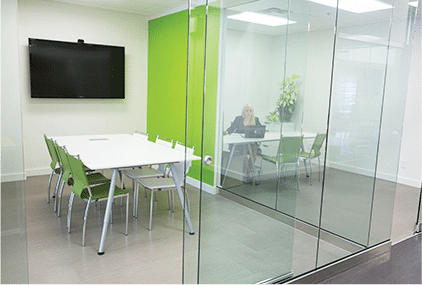A multi-functional conference room serves as the core of collaborative efforts within an organization. By incorporating versatile design elements and technology, you can enhance productivity and foster innovation.
Flexible Furniture Arrangement
Utilize movable furniture to accommodate various layouts.
Incorporating movable tables and chairs allows for quick adjustments to the space, catering to different meeting types such as lectures, workshops, or team brainstorms. Consider lightweight options that can be easily reconfigured, promoting greater adaptability. Additionally, having modular furniture that can be combined or separated enhances the rooms functionality. This flexibility not only maximizes the space but also encourages diverse interactions among participants. Therefore, planning your furniture selection with versatility in mind is crucial for a multi-functional conference room.
Integrated Technology Solutions
Incorporate state-of-the-art audio-visual equipment.
High-quality presentation tools, video conferencing systems, and sound systems are necessary for effective communication in a multi-functional conference room. Equipment such as 4K projectors and smart boards can elevate presentations and facilitate interactive discussions. Ensure that all technology is easily accessible and user-friendly to minimize delays during meetings. Wireless capabilities and remote access features also enhance collaboration both in-person and online. Investing in these technological advancements ensures your conference room meets modern demands.
Acoustic Optimization
Implement sound-absorbing materials to improve acoustics.
Proper acoustics are essential in fostering clear communication and reducing distractions. Adding sound-absorbing panels, carpets, and acoustic screens can significantly enhance the room’s sound quality. Additionally, consider the placement of furniture to further mitigate noise levels. By focusing on acoustics, you can create an environment that promotes concentration and effective dialogue during discussions. This is especially important in settings where multiple meetings may occur simultaneously.
Optimal Lighting
Design a lighting plan that accommodates various activities.
A well-lit conference room enhances mood and productivity. Use a combination of natural light, task lighting, and ambient fixtures to create a versatile atmosphere. Dimmable LED lights can help adjust the ambiance for presentations or brainstorming sessions. It is equally important to eliminate glare on screens and to ensure adequate lighting for note-taking and discussions. Thoughtful lighting solutions enhance engagement and keep participants focused throughout their meeting.
Organizational Tools
Incorporate storage solutions for necessary materials.
Effective organization within a multi-functional conference room promotes efficiency. Implement built-in storage areas for supplies such as whiteboards, flip charts, and office equipment. Clear labeling and easy access to organizational tools minimize disruptions during meetings. Additionally, consider using digital tools for document sharing and collaboration, which can further streamline processes. A tidy, organized environment significantly enhances productivity and fosters a professional atmosphere.
Climate Control
Ensure an optimal climate with adjustable temperature controls.
Maintaining a comfortable temperature is crucial for long meetings and boosts participant engagement. Implementing a reliable HVAC system allows for specific climate adjustments according to group size and preferences. Consider additional features such as ceiling fans or portable heaters for added flexibility. Proper climate control can prevent discomfort, leading to a more productive session. Thus, ensuring your conference room’s temperature is adequately managed is essential.
Personalization Options
Allow for personalization of the space to suit team needs.
Making a space feel personalized can greatly enhance comfort and productivity. Including customizable elements such as movable whiteboards or art can promote creativity during meetings. Additionally, encouraging teams to decorate or rearrange certain aspects of the room can foster ownership and pride in the space. Providing options for personalisation ensures that the conference room is not merely a blank slate but an environment that inspires innovative thoughts and interactions.
In conclusion, creating a multi-functional conference room involves careful planning of space, technology, acoustics, lighting, organization, climate control, and personalization. By incorporating these elements, you can foster an environment that enhances collaboration and boosts productivity.

